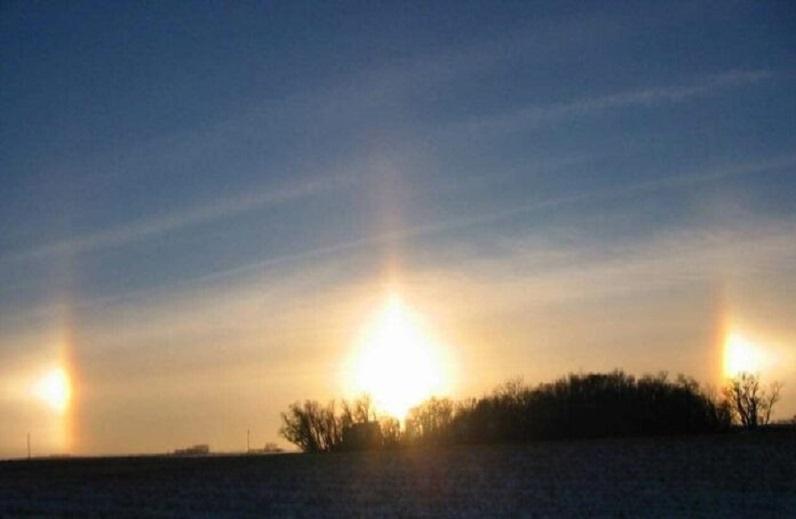Residents of the city of Mohe, in northern China, observed three light sources in the sky on October 15. A rare optical phenomenon called parhelion. In fact, on either side of the star, two other light sources have formed—a rare spectacle which response to the name of parhelion.
Don’t panic! There is still only one Sun in our solar system. But in Mohe, we believed in a multiplication of the stars. In this town of 20,000 residents, not far from Russia’s border, a strange optical phenomenon has been observed: a parhelion.
“It is an optical phenomenon that occurs when the sun’s rays pass through ice crystals in clouds at high altitude,” explains Tristan Amm, forecaster at Météo France. At low altitude, these crystals disappear, it is too hot there. A phenomenon “quite rare”, he specifies.
Rare phenomenon in China
Through these crystals, the Sun’s rays are reflected and form a sort of halo, giving the illusion of multiplying the Sun and its rays.
On the images widely shared on social networks, there are indeed three light sources, but all are from the same source.
In China, specialists explain that the phenomenon is very rare. However, this is not the first time that a parhelion has been seen there. In January 2020, images also showing three “suns” had made the buzz on the internet. But that of this Thursday, October 15, remains special.
Visible from 6.30 a.m. to 9.30 a.m., it remained no less than three hours—the longest running time ever in history. The Moon can also multiply other stars, and it can create a similar phenomenon and appear to in multiples. We then speak of paraselene. “It also works with the Moon, for example,” continues the forecaster. But there must be low-level clouds.”
Finally, when we do not see three suns, the parhelion can take the form of a multicolored spot in the sky, like a rainbow fragment. But these phenomena remain extremely rare.
